Having just landed in Slovenia and settled into our accommodation in Ljubljana, we were having second thoughts about venturing back out to visit Gostilna Skaručna (Skaručna Inn), located in the eponymous village – population 277 – halfway between the city center and the airport. This wasn’t a place you stumbled upon by chance or where you’d stop to grab a quick bite on your way someplace else. Was it really worth finding a car and hitting the same road we’d taken earlier in the opposite direction? Our local acquaintances claimed it was indeed worth it, explaining that dinner at Skaručna was a journey of its own, a feast that might last well into the morning hours. We’d have to bring friends (and a designated driver), prepared to ingest heroic amounts of food, rinsed down with no less heroic quantities of wine and brandy. If Slow Food meant anything to us, we were told, this was the place that epitomized it. So off we went.
Unlike the Croatian restaurants I’ve recently written about, Skaručna boasts no Michelin star. The star here is the chef, an unforgettable character known by everyone who’s anyone in the Slovenian wine and restaurant scenes: Slavko Žagar.
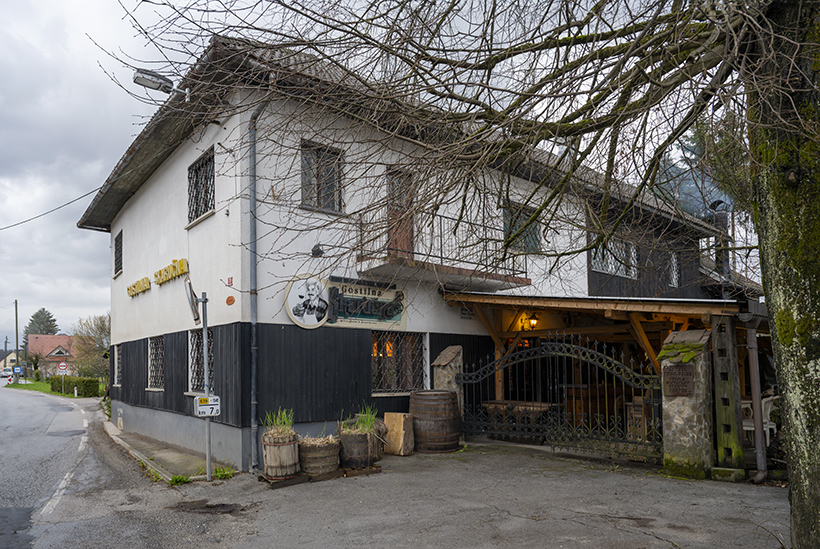
The story of Gostilna Skaručna starts in 1975, when Slavko Žagar Sr. and his wife opened an inn to serve traditional cuisine made with local products, swimming against the communist tide of forced deagrarianization and deruralization. They received praise for their authentic soups, sausages, and strudels, but the leg roasts (of beef, veal, pork, or venison) were their real specialty. A classic innkeeper, Slavko Sr. was also known for his abiding love of Italian operas, and he would sometimes sing along with arias playing on gramophone records behind the bar.
Slavko Sr. died in 2014, and his son, Slavko Žagar Jr., fully took over the helm of the inn, after being involved in the kitchen for years, since he’d turned eighteen. He kept the classic dishes and local ingredients, working with the same small farmers and breeders for many years on end and being a hunter himself. In his own words: “Our [specialty] dish is ox shank, invented by my father, we’ve been making it forever and I always identify with it. […] We are strongest in beef – tenderloin and roast beef, which is coated in mustard seeds and pepper for a month. And then all kinds of meats, from veal (veal tenderloin marinated in olive oil with garlic) to venison.”
With his charisma and unpredictability, his raspy voice and inimitable laugh, Slavko Jr. has earned Skaručna its reputation as the craziest and most unique Slovenian inn. His presence throughout the meal, his almost theatrical demeanor, his stories, and his generous tour of the kitchen and cellar are as much an experience as the food itself. But now it’s dinner time, so let’s get started!
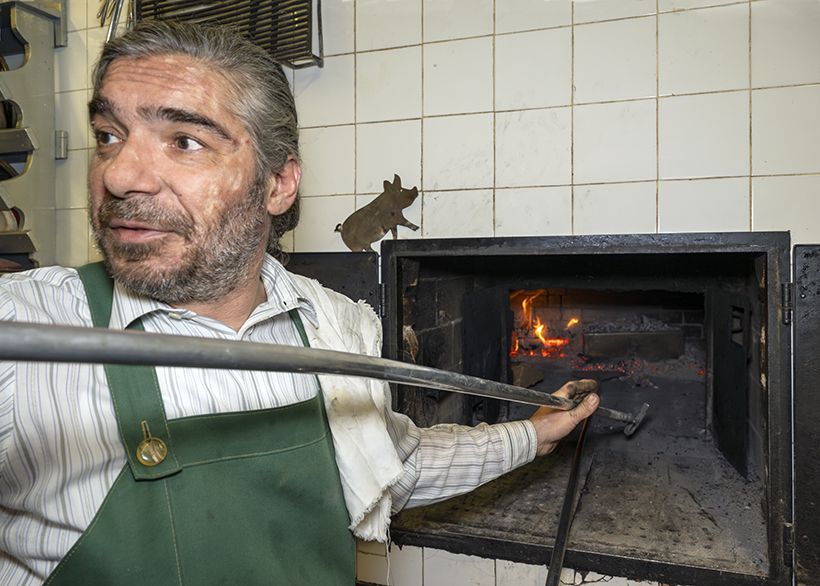
As we enter the inn, we’re welcomed with a glass of homemade infused brandy. Far from your run-of-the-mill moonshine, this is a delicious apple brandy macerated with mint leaves (a lot of them) and aged for 5 years in demijohns, then for another 5 years in wooden barrels. If I understand correctly, the alcohol is actually distilled by nearby farms, and then Slavko takes care of the tincturing and maturation in his own cellar. He also makes an excellent brandy infused with raspberry purée. We’ll have the occasion to taste and re-taste both spirits several times throughout the evening.
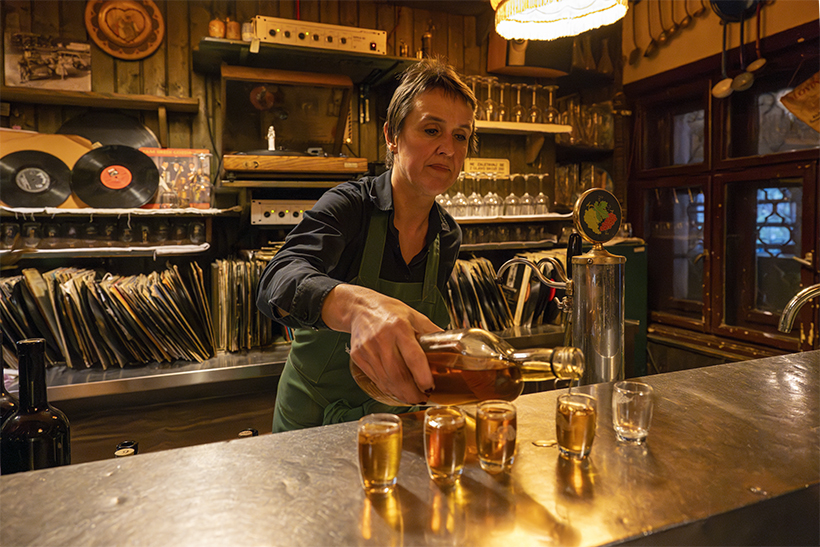
In the dining room, the decor fulfills every expectation one might have of an old-school countryside inn: lace curtains by the door, wood paneling on the walls, earthenware stove in the corner, hunting and fishing trophies all over, lampshades producing a subdued light, an imposing china cabinet and tables with red checkered tablecloths. Vinyl records still fill every corner of the inn, and they spin Slovenian songs, Yugoslav classics, jazz, and more. It turns out that my group has the whole inn for ourselves – and we’re hungry!

First comes the beef tongue carpaccio with grated goat’s and sheep’s milk cheeses, drowned in very pungent olive oil and garlic. The tender tongue is actually cooked and sliced very thinly. The dish is super rich and very strong, yet it works beautifully and we find ourselves mopping up the oil with some homemade bread. “Don’t eat too much bread,” we were warned several times; there are a dozen dishes still to come!
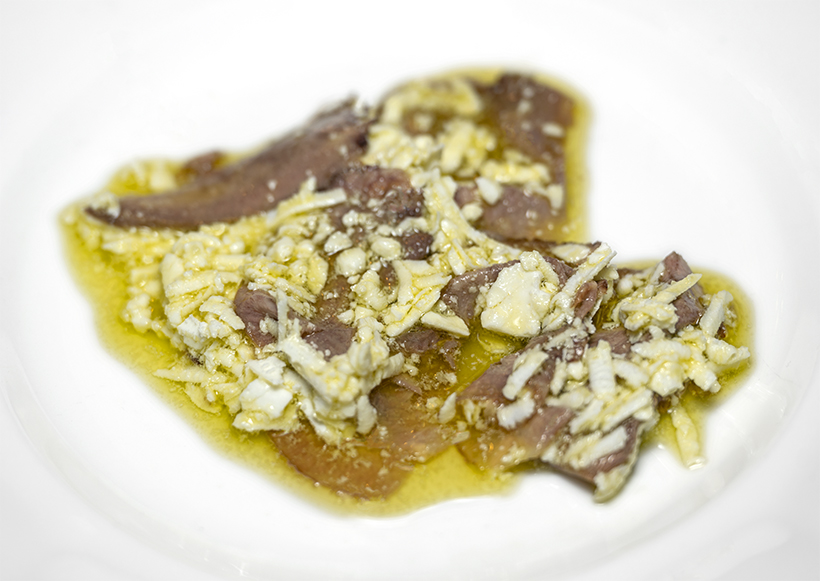
Skuta is the ubiquitous Slovenian farmer cheese, and it’s brought to us in two different preparations: one with olive oil, mustard seeds, and herbs (dill, chives), and the other as a kind of spicy Liptauer, with paprika, hot pepper, and onions. Both are very good and it’s nice to have the two versions side by side. So much for not eating more bread…
Just like many Michelin restaurants, Skaručna too has dishes finished tableside. The esihflajš, a “salad” usually made from beef leftovers, arrives on a large tray with all the ingredients still separated: thinly sliced beef roast, grated hard-boiled egg, sliced celery and red onion, chopped gherkins, a mild vinegar, and pumpkin seed oil. Our server mixes the salad before our eyes and divides it between our plates. Now preserved in vinegar, the meat leftovers would traditionally be consumed over the course of a week. We wolf down the whole thing in a few minutes. It’s definitely my kind of salad.
We then share a dish of polenta, prepared with sour cream and cottage cheese and baked in the wood-fired oven. It’s quite cheesy and salty, and I like the gratinated top. But it’s just polenta, and a bit weird to see served on its own.
Instead the polenta could accompany the large plate of cold-smoked, air-dried pork shoulder that follows. The pork of course comes from a farm near the restaurant – one whence the chef buys his brandy. The thinly sliced cured meat, very smoky and salty, reminds me a bit of speck. There must be a name in Slovenian for this particular delicacy, but I haven’t been able able to find it.

Time for beef soup, another staple of Slovenian cuisine. This one consists of a thin broth with carrots, onions, chunks of beef, egg white, and herbs (chives, maybe parsley). Not unlike a French pot-au-feu, but with less meat.
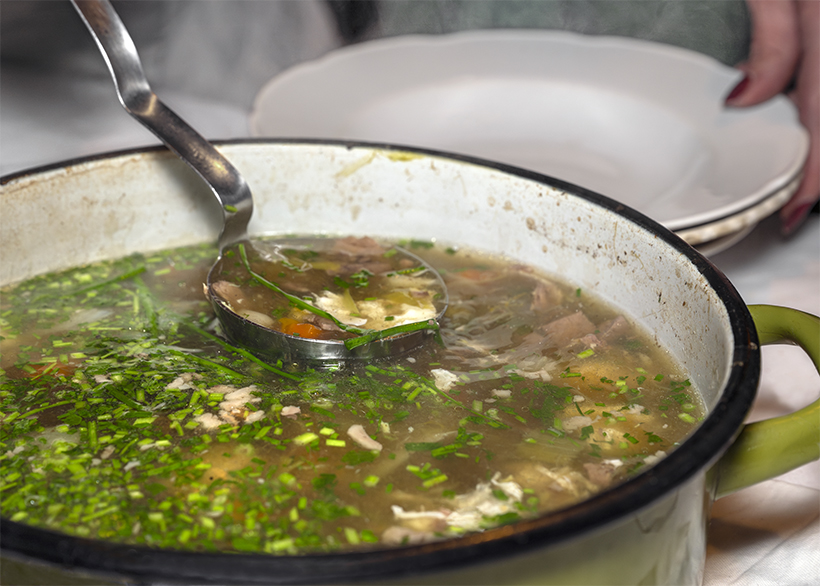
Next, the smoked trout leaves a lasting impression on all of us. Slavko cures it in a dry mix of salt and sugar, then cooks it in a small electric smoker for 11 minutes at 150 C, and finally lets it rest for 5 minutes. The whole fish is delicious and very tender. Most of it in fact doesn’t have a very pronounced smoky taste; only the belly, where the fish has been gutted, really tastes like smoke. This time the chef literally sits at our table and picks the flesh from the trout to distribute between our plates. He adds a pungent sauce made with cream and horseradish (the horseradish is grated directly into the cream so it doesn’t lose its potency, as horseradish oxidizes upon contact with air) and instructs us to use the sauce only on the smoky parts. We finish with the choicest pieces, the cheeks and the fatty, gelatinous insides of the fins, which boast a stronger smoke taste. An excellent smoked trout throughout.
Two types of salads, served on their own, conclude the rounds of appetizers: one with radicchio, hard-boiled egg, herbs, and olive oil; the other with lettuce, hard-boiled egg, and pumpkin seed oil. Good but nothing special.
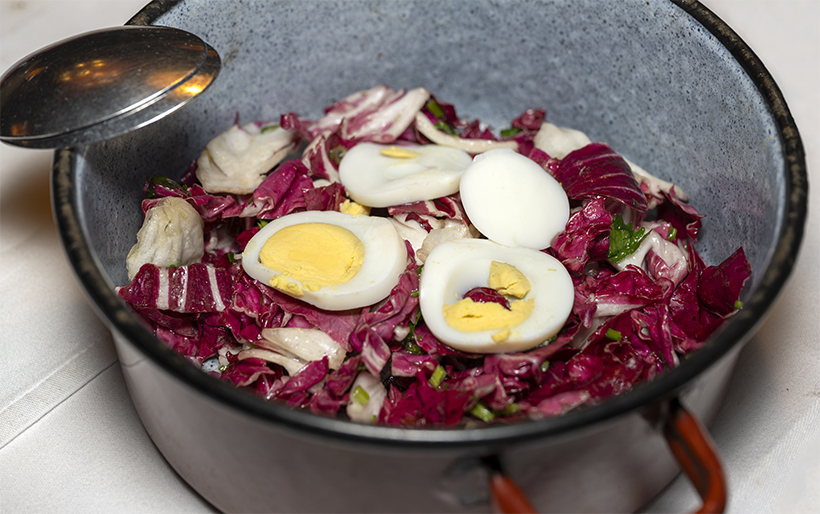
We’re now taking a break to visit the cellar. Multicolored glass jars on shelves carry various flavored brandies. Oak barrels on the ground contain other concoctions or wine. Many jar tastings, barrel tastings, and technical discussions follow. The chef tells us a story: once he bought a lot of brandy from a farm, so much that they had to use two vans for the delivery because one wasn’t enough to carry it all. This makes him laugh a lot. I also notice a whole barrel of 2016 Ribolla from Gravner in a corner. If he doesn’t know what to do with it, he can give me a call any time…
Back in the dining room, Slavko is now putting the finishing touches on oven-baked potatoes with butter and salt. Nothing else, yet these are some fine baked potatoes all the same.


Time has come for one of those meat joints that made the fame of Skaručna: a piece of beef round braised with carrots and onions. The dish is cooked inside a metal box, placed in the wood-fired oven and surrounded by hot coals, a bit like a Croatian peka. It’s served with some more potatoes, grated fresh horseradish, and sour cream. While the sauce and the vegetables taste great, I have to say the beef isn’t very tender; it could probably use more hours in the oven, although then we’d be eating at 3:00 a.m.
For dessert, we get to try the Slovenian štrukli, best described as a farmer cheese strudel that’s been boiled, sliced, and topped with a sweet melted cinnamon butter. The slices are very soft, and the butter-sugar combination helps absorb all the alcohol we’ve consumed throughout the evening.

Because, in addition to those brandies, we’ve also downed many carafes of different kinds of skin-contact white wines chosen by the chef. As he explained in this 2011 interview [I’m translating], “Usually, I notice a good wine, in a tavern or with a wine friend. Then I try something from that winemaker, and then I go to him. If we find a common language, we can work together for the rest of our lives.”
I unfortunately didn’t write down the producers of the wines we tried, but there were at least three different kinds, with various degrees of maceration, and I remember that the last one was absolutely amazing (Slavko opened half a dozen bottles just to find the one that he liked best). There were also two delicious fruit juices: Mirabelle plum and red grape, the latter very thick, like no grape juice I’ve ever had.
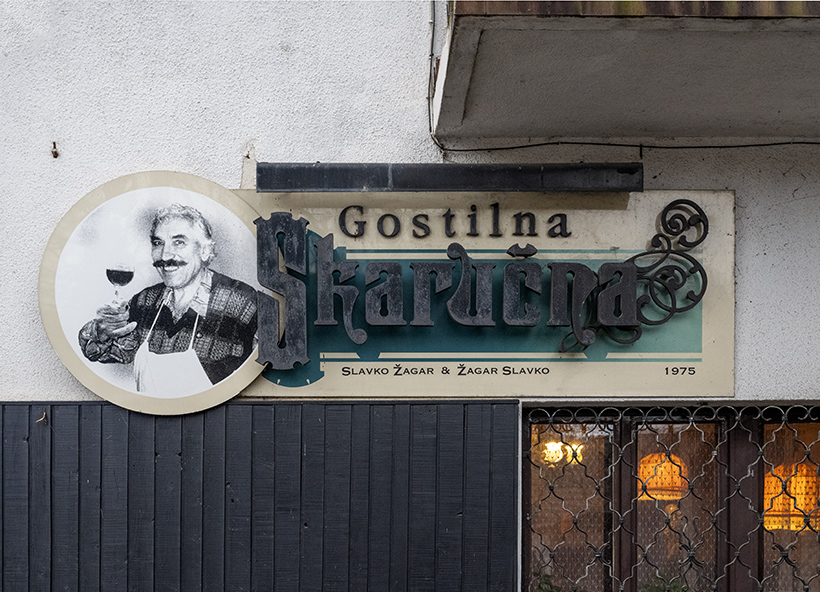
And so we head back to Ljubljana around 1:00 a.m., more than a little tipsy but in the safe hands of our juice-loving designated driver. The dinner has been an unforgettable experience. Was every dish fabulous? No, but this meal proved an intense introduction to traditional Slovenian cuisine and wines. Later in our trip, we’ll get to meet many decorated winemakers and chefs who push the boundaries of accepted oenology and Slovenian cuisine. All of them know Slavko Žagar.














